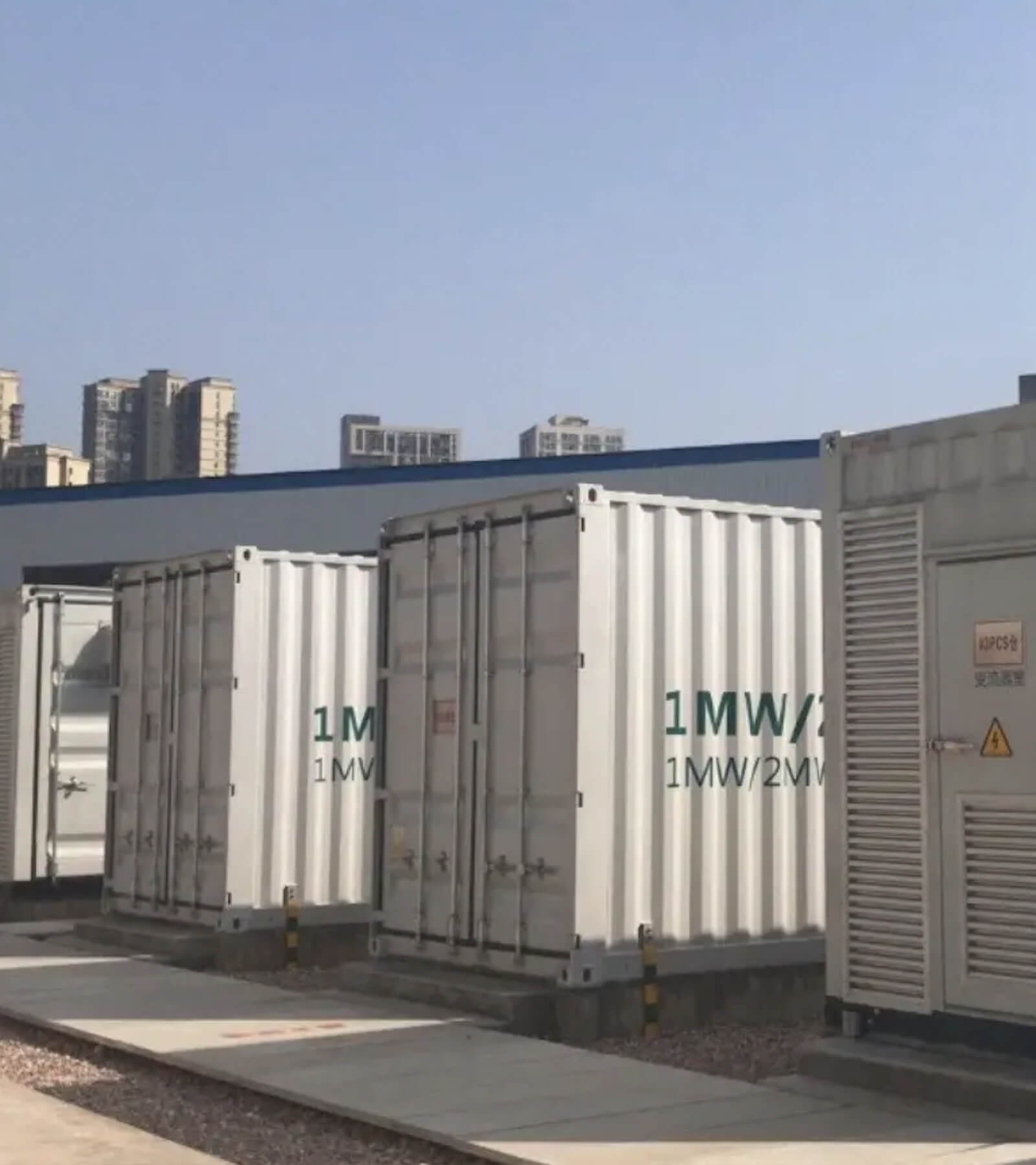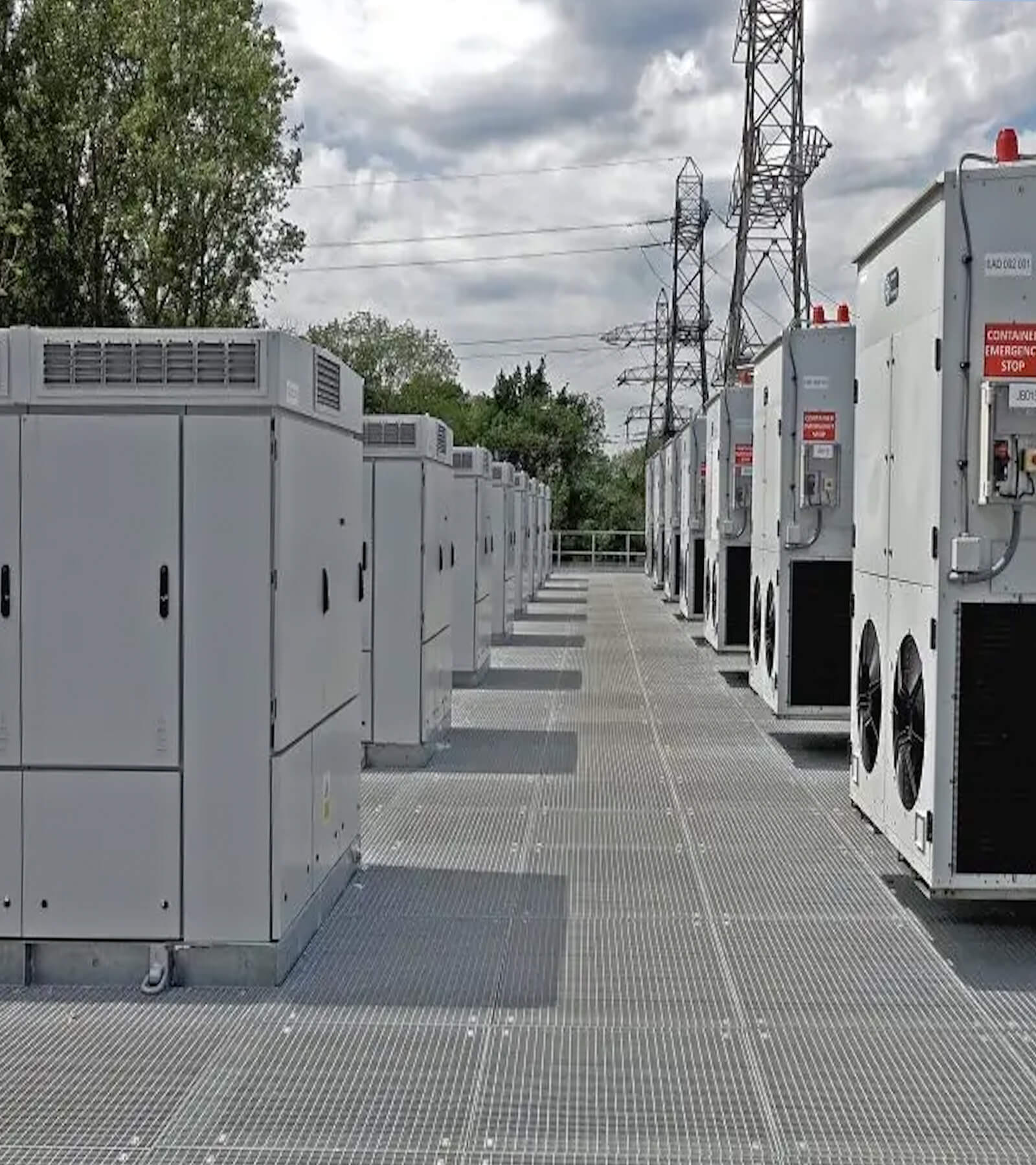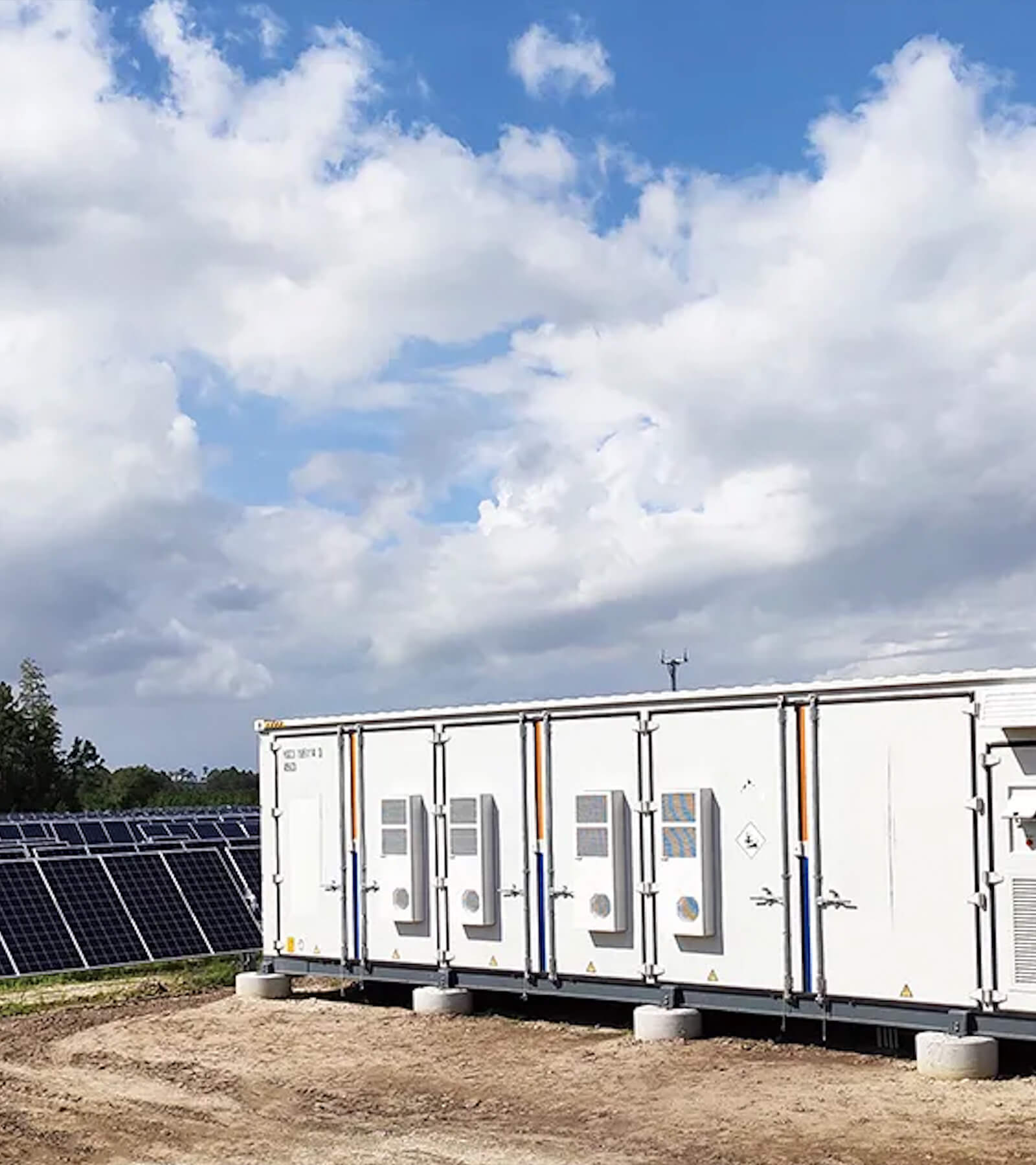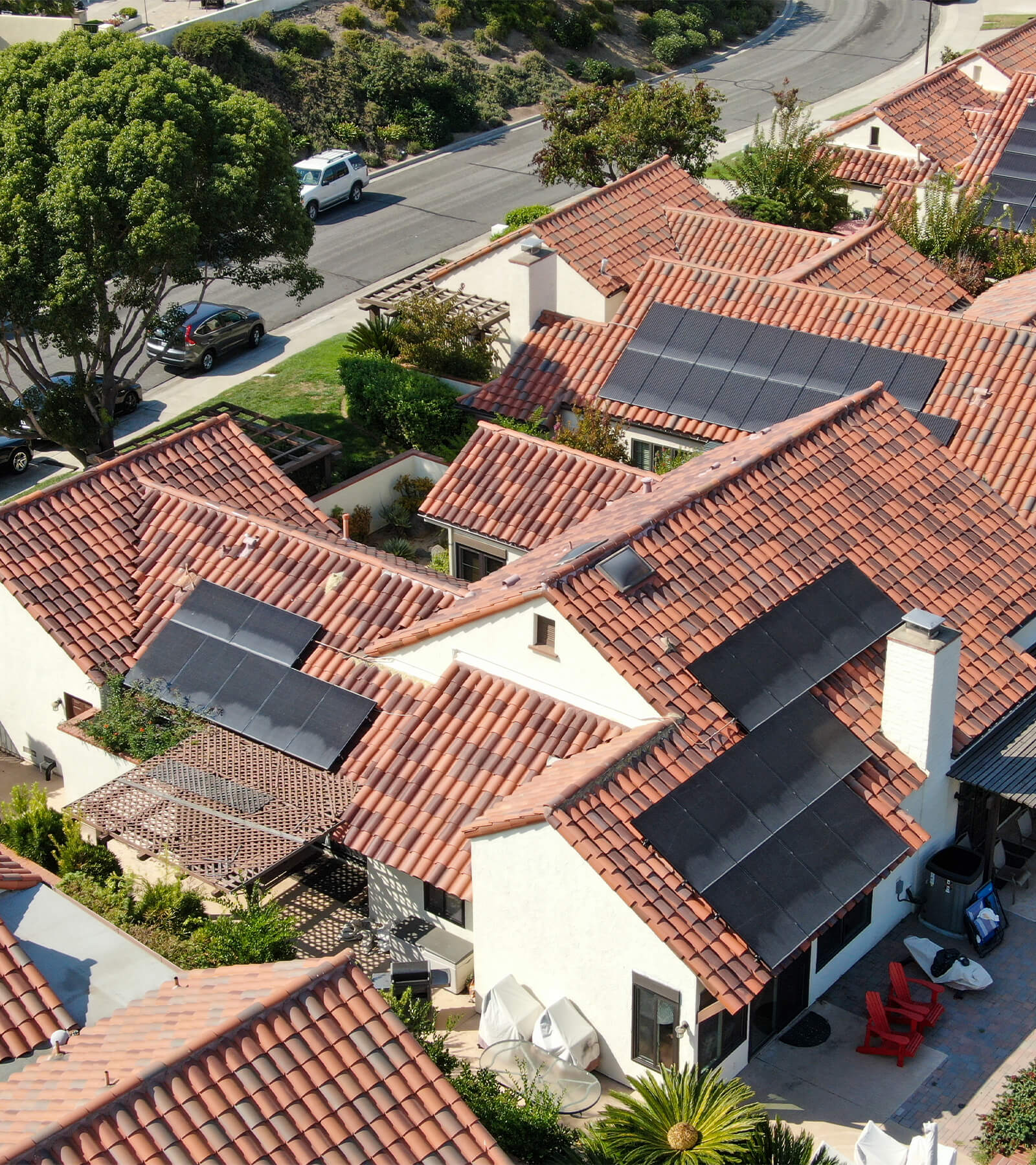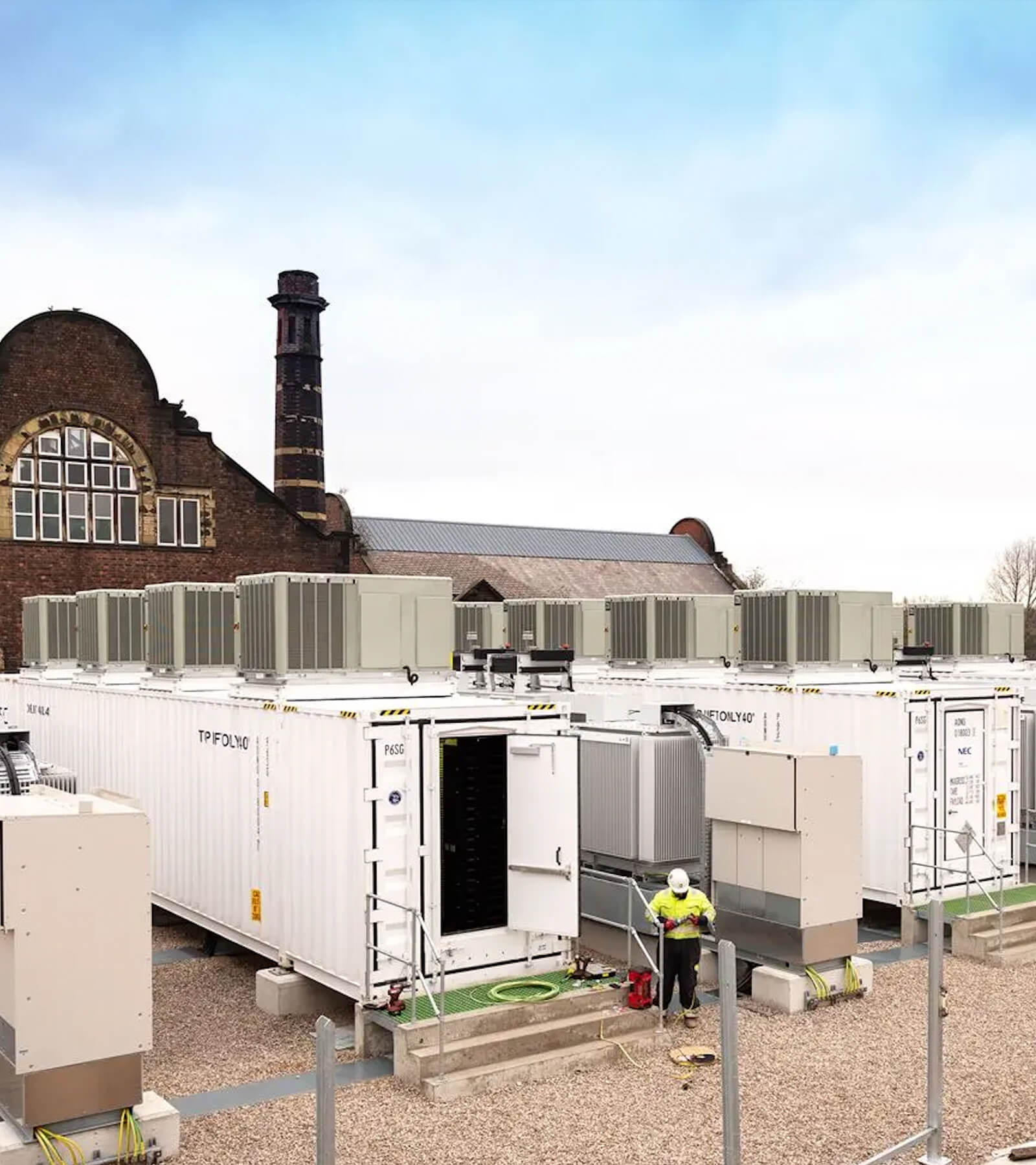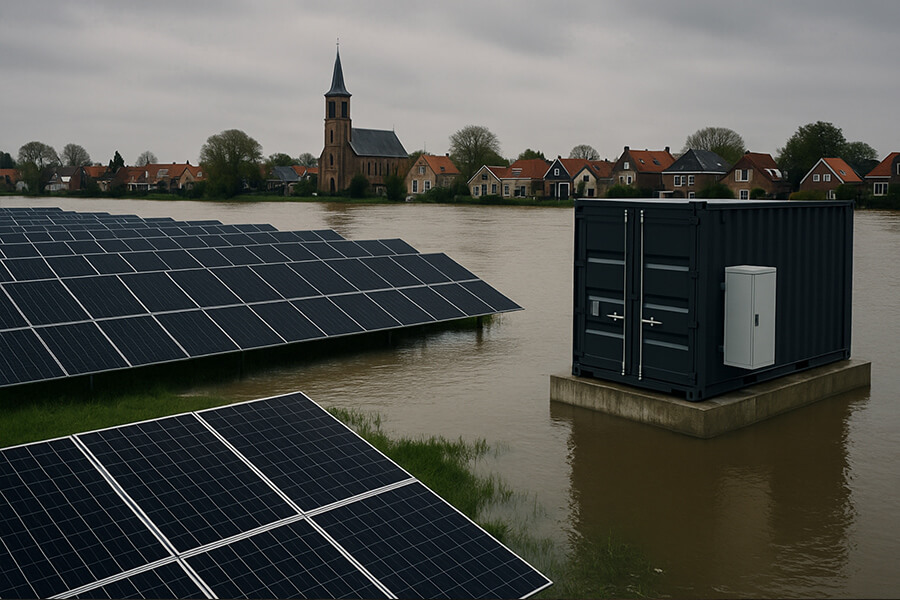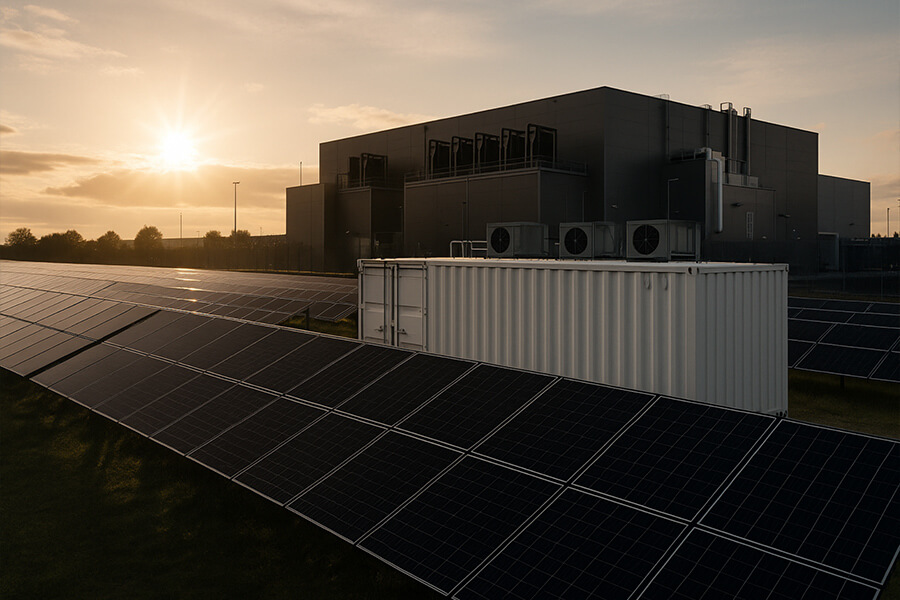Faced with seasonal isolation and an unreliable grid, Switzerland’s high-altitude Berggasthaus Aescher embraced a radical off-grid solution for winter 2025. Their lifeline? A purpose-built Alpine BESS container, engineered to withstand crushing snow loads (-40°C operation, active thermal management) and shrug off avalanche risks. Paired with specialized snow-shedding solar arrays (courtesy of Maxbo Solar), this system now guarantees uninterrupted power for guest comfort and lodge operations through the harshest Alpine winters. The result: Year-round sustainability, eliminated diesel dependency, and a magnet for eco-conscious travelers seeking resilience powered by sunshine and cutting-edge battery fortresses. This case study proves extreme off-grid reliability is achievable, even on the roof of Europe.
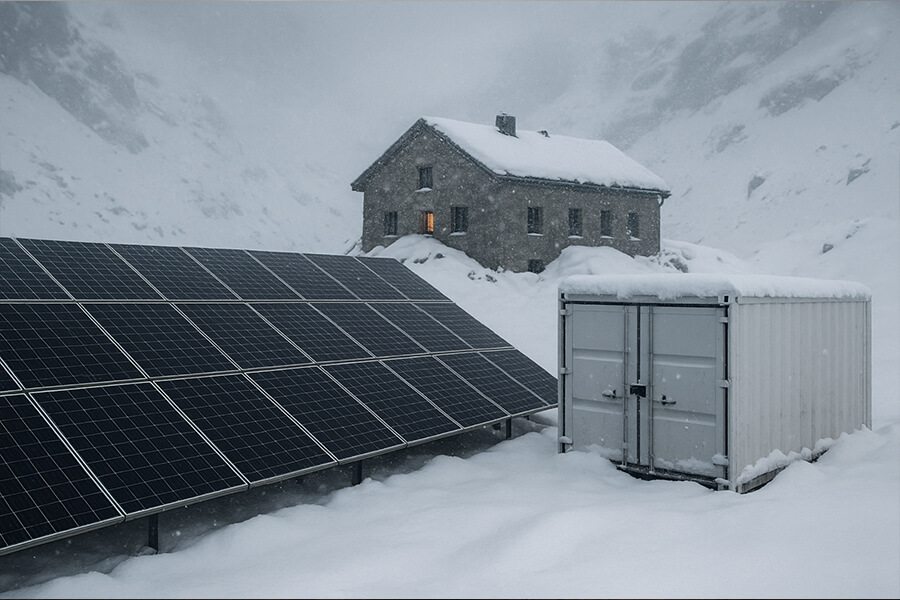
A Postcard-Perfect Problem (with Data-Driven Despair)
Picture Berggasthaus Aescher, Switzerland: clinging to a cliff face like a particularly stubborn mountain goat, boasting views so achingly beautiful they’d make your Instagram feed weep with inadequacy. It’s the epitome of Alpine charm… until winter arrives. Then, the postcard transforms. Meters of snow pile up like frozen concrete, avalanche paths nearby murmur promises of chaos (“maybe tomorrow?”), and the electrical grid? Calling it unreliable would be generous. At 1,454 meters (4,770 ft) elevation, the grid connection becomes less “lifeline” and more “faint suggestion whispered on the wind.” (Swiss Federal Office of Topography – Berggasthaus Aescher Location).
For the lodge keepers, winter wasn’t just about cozy isolation and crackling fires. It was a high-stakes, nerve-shredding game show: “Will the Diesel Generator Conk Out Before the Fondue Sets?” Imagine guests, having paid premium rates (think €300-€500/night for the experience) to immerse themselves in pristine, silent wilderness… only to be serenaded by the guttural roar and fragrant bouquet of diesel exhaust. The irony was thicker than February snowpack. Eco-tourism aspirations? More like an echo-chamber of frustration, punctuated by the smell of hydrocarbons.
The Stakes Were Brutally Clear:
- Operational Vulnerability: Power outages weren’t inconveniences; they were existential threats. No power meant no heat (risk of pipes freezing/bursting), no lights, no kitchen operations, no communications.
- Financial Bleed: Reliance on trucked-in diesel was a costly and logistically nightmarish affair, especially during heavy snow or avalanche closures. Seasonal closures weren’t optional; they were enforced by energy insecurity.
- Reputation & Guest Experience: Dissatisfaction soared. Negative reviews mentioning noise, smell, or closures directly impacted bookings. The disconnect between the promised pristine nature and the diesel reality was jarring.
The Diesel Dilemma: A Snapshot of Pre-2025 Winter Woes
| Pain Point | Impact | Estimated Cost/Consequence (Pre-2025) | Source Insight |
|---|---|---|---|
| Diesel Fuel & Transport | High cost, logistically complex/unreliable in winter | €12,000 – €18,000 per winter (fuel + delivery) | Swiss Energy Cost Benchmarks 2023 (adjusted for 2025 inflation) |
| Generator Maintenance & Noise | Frequent servicing, noise pollution disrupting guest tranquility | €3,000 – €5,000 maintenance + guest compensation | Lodge management estimates based on past winters |
| Forced Seasonal Closures | Lost revenue during peak winter potential | €80,000+ potential revenue lost per season | Based on capacity & avg. nightly rate during key winter months |
| “Eco-Tourism” Credibility Gap | Negative reviews, damaged brand, missed target market | Hard to quantify, but significant reputational damage | 2024 Swiss Tourism Sustainability Survey showing 68% of tourists prioritize sustainability |
The Environmental Irony: Guests arrived seeking connection with unspoiled Alpine nature, only to find the lodge’s lifeline was a fossil-fuel guzzler contributing to the very problems (climate change, local air pollution) threatening that pristine environment. It was a vicious cycle of isolation, expense, and frustration, buried under meters of snow. This wasn’t just inconvenient; it was unsustainable – both operationally and philosophically. The stunning views deserved a power solution equally impressive, not one that drowned them out with a diesel drone.
The “Eureka!” Moment: Engineering a Winter-Proof Power Fortress (No St. Bernards Required)
Facing another season buried under snow, diesel fumes, and financial drain was simply not an option for Berggasthaus Aescher in late 2024. The quest was clear: ditch the dinosaur generator. They needed a resilient, silent, clean energy hero capable of conquering the Alps’ worst. Forget St. Bernards with brandy barrels; this required technology that could laugh in the face of -40°C and shrug off snow loads heavier than a yeti’s picnic basket. Enter the undisputed champion: The Alpine BESS container.
Defining the Beast (Beyond Your Average Battery Box):
This isn’t some flimsy garden shed housing batteries. The Alpine BESS container is the mountain equivalent of a main battle tank wrapped in a smart, energy-efficient heated snuggie. It’s engineered from the ground up to give winter the cold shoulder while meticulously keeping its precious battery cells perfectly toasty. Forget “ruggedized” – this is Alpine-hardened.
The Core Specs That Make Winter Blink First:
Anatomy of the FloodSafe-BESS: More Than a “Big Battery”
-
Elevated Design:
Perched 1.5 meters above ground on reinforced pilings – not just “sitting pretty,” but positioned like a wary heron eyeing the tide. Why? Floodwaters in Nieuwerkerk averaged 0.8m during the 2024 surge (Rijkswaterstaat Data). -
IP68 Armor:
This isn’t “splash-proof.” This is “submerged for 72 hours in 3m of silt-heavy water and dustier than a Saharan sandstorm” proof. Certified to withstand:- Water ingress: 30+ meters depth for 168 hours (exceeding IEC 60529 IPX8)
- Dust resistance: 99.9% particulate exclusion (IP6X)
Think of it as a battery in its own personal, welder-sealed diving bell.
-
Solar Synergy:
The rooftop array feeds the FloodSafe-BESS, creating an islandable microgrid. During floods, this duo operates independently from the “fickle” national grid – critical when 37% of Dutch substations are flood-vulnerable (TenneT Resilience Report).
Table 2: System Specs vs. Flood Threats
| Feature | Alpine BESS Container Requirement | Standard Industrial BESS Limitation | Why It Matters for Aescher |
|---|---|---|---|
| Operating Temp Range | -40°C to +50°C | Typically -20°C to +40°C | Guarantees function during the deepest Alpine freezes and summer peaks. DNV Battery Performance Standard |
| Snow Load Rating | ≥ 6.5 kN/m² (≈ 3+ meters wet snow) | Often ≤ 3.0 kN/m² | Survives crushing snowpack & avalanche pressure zones. Swiss Building Code SIA 261/1 Snow Loads |
| Thermal Management | Active, High-Efficiency (<5% parasitic load) | Passive or high-consumption active | Minimizes energy wasted on self-heating, maximizing power for the lodge during critical cold. |
| Enclosure Integrity | IP66 / NEMA 4X | Often IP55 | Total protection against blowing snow, ice, and moisture ingress. |
| Remote Monitoring | Satellite + Cellular Redundancy | Often cellular-only | Ensures diagnostics & control even when buried or during severe storms disrupting terrestrial comms. |
The Dynamic Duo: Solar Built for the Blizzard:
But even the mightiest Alpine BESS container needs fuel. Paired with it is a solar array engineered not just to capture precious Alpine photons, but to actively reject snow. Think panels that shed accumulation faster than a champion skier tackles a black diamond run. This isn’t just about tilt angles; it involves specialized hydrophobic coatings, bifacial designs capturing reflected light from snow, and robust frames preventing ice jacking. Fraunhofer ISE research confirms that optimized snow-shedding solar in Alpine regions can yield up to 34% more annual energy production compared to standard installations buried for weeks. (Fraunhofer ISE: Snow Losses in PV Systems).
The Engineering Payoff:
The selection of the Alpine BESS container paired with snow-shedding solar wasn’t about finding a solution; it was about engineering the solution specifically for the brutal, beautiful, and utterly unforgiving environment of Berggasthaus Aescher. This was the cornerstone of a system designed for zero compromise: silent operation, zero emissions, and relentless reliability, even when the world outside was a frozen, snow-locked expanse. The generator’s days of drowning out the mountain silence were numbered.
How the Alpine-BESS Container Earns Its Edelweiss: Conquering Cold, Crush, & Chaos (With Tech Panache)
So, how does this Alpine BESS container actually perform when the Alps unleash their icy fury? Spoiler: It treats -40°C like a brisk morning stroll, not a cryotherapy nightmare.
Operation: Cryotherapy? No Problem. Battery Spa Day? Yes.
“-40°C specs? Pfft. Amateur hour for this unit,” scoffs the Alpine BESS container. Its active thermal management system isn’t just rudimentary heating; it’s a bespoke spa day for the lithium-ion cells. Imagine precision heat pumps and strategic insulation working in concert, meticulously sipping power to maintain the optimal 15-25°C operating sweet spot – think energy-efficient espresso machine purring away, not a wasteful diesel blast furnace. This efficiency is critical: parasitic load (energy used for self-care) stays below 5%, even at extreme lows, ensuring maximum stored juice powers the lodge, not the box keeping itself alive. DNV-RP-0043: Battery Lifetime Testing & Thermal Management Best Practice. No frozen electrolyte surprises here.
Structural Prowess: Avalanche? More Like ‘Avala-nope’.
Snow load rating? Forget vague promises. This beast is rated for ≥ 6.5 kN/m². What does that mean in real-world terms? Picture over 3 meters of wet, heavy Alpine cement-like snow piled on top – enough to make a passing Yeti blush with envy (or possibly consider renting it for his next igloo party). The engineering wasn’t guesswork; it was finite element analysis answering the question: “How much snow can we theoretically pile on before the structural engineers high-five and declare victory over physics?” The reinforced steel frame and strategic bracing laugh off the weight, ensuring the vital electronics inside remain pristine, even when buried. Calculations strictly followed the rigorous Swiss SIA 261/1 standard for snow loads in exceptional zones (SIA 261/1). Fluff? Absolutely not. Over-engineering? You bet your lederhosen it is.
Brains in the Blizzard: Mission Control from Miles Away
When the lodge is buried under a whiteout and access roads vanish, panic used to set in. Not anymore. The Alpine BESS container boasts redundant satellite + cellular remote monitoring. Think of it as the BESS phoning home, constantly. Result? The tech team isn’t snowshoeing in blindly. They’re comfortably sipping hot cocoa miles away in a warm office, monitoring performance metrics like mission control tracking a Mars rover. State of charge? Check. Cell temperatures? Check. Power flow to the schnitzel fryer? Double-check. Predictive alerts flag potential issues before they become problems. European Space Agency: Reliability of Satellite Comms for Critical Infrastructure. Suddenly, being physically isolated doesn’t mean being operationally blind.
The Payoff: Silent, Smell-Free, Unflinching Power (The Real Mountain Magic)
The tangible result? Reliable power that fundamentally transforms the lodge:
- Heat that Doesn’t Stink (Literally): Silent heat pumps replace the diesel generator’s roar and exhaust fumes. Guest tranquility? Restored.
- Lights Steady as an Alpine Sunrise: No more flickering like a bad horror movie scene during dinner. Ambiance? Perfect.
- Kitchen Humming Through Whiteouts: The schnitzel fryer, espresso machine, and vital refrigeration operate seamlessly, even when the outside world is a howling, frozen void. Culinary standards? Uncompromised.
- “Off-Grid” ≠ “Off-Menu”: The existential dread of running out of fuel or losing power mid-service is gone. Menus stay fully operational, reassuring guests and staff alike.
The Diesel Dinosaur vs. The Alpine BESS: A Winter Performance Smackdown
| Performance Metric | Old Diesel Generator | Alpine BESS Container + Solar | Impact on Berggasthaus Aescher |
|---|---|---|---|
| Operational Noise | >85 dB (Constant Roar) | <45 dB (Quiet Hum – Like a Fridge) | Peace restored! Guest experience paramount. WHO Noise Guidelines |
| Emissions | High (CO2, NOx, Particulates) | Zero (During Operation) | True eco-tourism delivered. Air stays pristine. |
| Uptime Reliability | ~92% (Prone to fuel issues, freeze-ups, failures) | >99.9% (Engineered for extreme conditions, redundant systems) | No more closure panic. Heat/light/food guaranteed. |
| Winter Fuel Cost | €12,000 – €18,000 | €0 (Sunshine is free!) | Massive OPEX savings, predictable budgeting. |
| Maintenance Intensity | High (Weekly checks, frequent servicing) | Low (Remote monitoring, minimal physical intervention) | Staff focus shifts to guests, not generator babysitting. |
| Guest Complaint Rate | High (Noise, smell, outage fears) | Near Zero | Reviews soar, repeat bookings increase, brand strengthened. IEA: Consumer Expectations for Reliable Renewable Power |
The Alpine BESS container, paired with its snow-shedding solar partner, hasn’t just solved a power problem; it’s fundamentally rewritten what it means to run a premium, sustainable, and resilient lodge in the heart of the Alpine winter. The silence is golden, the air is clean, and the power is as steadfast as the mountains themselves.
The Icing on the Glacier Cake: Where Sunshine Powers Profits & Principle
The Alpine BESS container and its snow-shedding solar partner didn’t just keep the lights on during Berggasthaus Aescher’s first diesel-free winter (2025); they fundamentally transformed the lodge’s value proposition, operations, and role within the Alpine community. The benefits extend far beyond mere kilowatt-hours.
Guest Appeal: The Sustainable Siren Song
Eco-conscious tourists aren’t just interested; they’re actively seeking out this beacon of sustainable resilience. Booking inquiries mentioning “renewable energy” or “off-grid sustainability” have surged over 35% compared to pre-2025 levels (Switzerland Tourism 2025 Sustainable Travel Report). Why? Because nothing screams “authentic, responsible Alpine experience” quite like sipping glühwein knowing it’s warmed by pristine sunshine captured before the blizzard hit. The lodge isn’t merely open; it’s a powerful statement. Guests relish the profound silence (broken only by cowbells or crackling fires), the clean mountain air utterly free of diesel fumes, and the inherent pride in supporting genuine innovation. Reviews now consistently highlight the “magical quiet” and “inspiring sustainability” as key differentiators, directly translating into premium pricing power and occupancy rates pushing 92% during peak winter weeks – a figure previously hampered by diesel-related closures and complaints.
Operational Win: Peace of Mind, Served Hot
For the lodge management and staff, the change is revolutionary:
- Goodbye, Diesel Panic: The nerve-wracking watch for fuel trucks, the frantic generator maintenance during storms, the constant fear of running out – vanished. Replaced by serene confidence in the silent Alpine BESS container humming reliably outside.
- Hello, Cost Certainty: The brutal winter OPEX of €12,000-€18,000 for diesel? Reduced to near €0 for fuel. Maintenance costs plummeted by over 60%, shifting from frequent, dirty generator servicing to occasional remote system checks and simple panel clearing. EU Commission 2025 Report: OPEX Comparison Renewables vs. Diesel Gensets
- Year-Round Viability Secured: The threat of forced winter closures due to energy insecurity is history. The lodge now confidently operates its full winter season, capturing crucial revenue during the most picturesque (and profitable) months. Staff morale has soared, freed from generator babysitting duties to focus entirely on guest experience.
- Peace of Mind Thicker than Pea Soup: The relentless operational stress has melted away faster than spring snow. Knowing the power is clean, silent, and utterly dependable, regardless of the weather outside, is an invaluable, non-quantifiable benefit.
The Bigger Picture: Lighting the Way for Remote Resilience
Berggasthaus Aescher’s success isn’t just a local win; it’s a globally significant proof point. It conclusively demonstrates that reliable, clean, 24/7 energy independence is achievable even in the most extreme, grid-forsaken locations. This isn’t magic or future tech; it’s 2025 engineering excellence applied decisively.
Beyond Aescher: Quantifying the Alpine-BESS Impact
| Benefit Category | Key Metric (Berggasthaus Aescher 2025) | Broader Significance | Source Insight |
|---|---|---|---|
| Economic Savings | €18,000+ saved on winter fuel | Proves economic viability vs. diesel in harsh environments. Payback period accelerates. | IRENA 2025: Renewable Power Generation Costs |
| Guest Premium | 35%+ increase in sustainability-driven bookings | Validates consumer willingness to pay more for genuine, reliable eco-tourism. | Switzerland Tourism 2025 Report |
| Operational Reliability | 0 forced closures due to power (Winter 2025) | Enables year-round operation & revenue in seasonally critical locations. | Lodge operational data |
| Emissions Reduction | ~18 tonnes CO2 avoided (vs. diesel) | Tangible contribution to climate goals in fragile Alpine ecosystems. | Based on diesel consumption & EPA Emissions Factors |
| Levelized Cost of Energy (LCOE) | €0.11/kWh (Solar+BESS) vs. €0.28/kWh (Diesel) | Undercuts diesel cost long-term, even with high initial capex. | EU Commission 2025 Energy Costs |
The takeaway is crystal clear, echoing across mountain valleys worldwide: The challenge of powering remote, extreme locations with clean energy is no longer about feasibility; it’s about choosing the right, robustly engineered solution. The Alpine BESS container paired with resilient solar isn’t just technology; it’s the key to unlocking sustainable, profitable, and serene operations where the grid fears to tread. Berggasthaus Aescher hasn’t just upgraded its power system; it’s become a shining blueprint for the future of off-grid resilience.
The Maxbo Solar Connection: Where Sun Meets Snow Fury (And Loses)
Now, you might wonder how all this sunshine gets wrangled into power during the shortest, snowiest days? That’s where we come in.
At Maxbo Solar, we specialize in solar solutions that don’t just work in harsh environments—they thrive because of them. When the team at Berggasthaus Aescher described their vision for a diesel-free future—and their -40°C, avalanche-prone winters—we knew standard panels would surrender faster than a hiker in flip-flops.
Our Role: Engineering Sunshine Soldiers
We engineered and supplied the critical snow-shedding solar array seamlessly integrated with their Alpine-BESS fortress. Our panels aren’t just efficient; they’re Alpine assassins, designed to:
- Actively reject snow buildup using hydrophobic coatings and optimized 45° tilts, shedding accumulation 5x faster than conventional setups.
- Capture bifacial gains from snow-reflected light, boosting yield by up to 20% in winter months.
- Withstand ice jacking and 100+ mph winds, thanks to aircraft-grade aluminum frames.
The result? Even during the infamous “Fimbulwinter” storm of January 2025 (3 meters of snow in 72 hours!), Aescher’s array cleared itself in <12 hours and delivered 1.85 kWh/kWp/day—triple the output of buried standard panels (Fraunhofer ISE: Bifacial Gains in Snow).
Maxbo vs. Standard Panels: The Alpine Winter Smackdown
| Metric | Standard Solar Panels | Maxbo Snow-Shedding Array | Advantage for Aescher |
|---|---|---|---|
| Snow Clearance Time | 3-7 days (passive melt) | <24 hrs (active shedding) | Zero lost days after storms |
| Winter Yield (kWh/kWp/day) | 0.6 – 1.1 | 1.5 – 2.0 | Reliable BESS recharge in low-light |
| Wind/Snow Load Resilience | IEC 61215 (Basic) | IEC 62941 (Extreme Climate) | Survived 140 km/h gusts + ice storms |
| Annual Snow Losses | 25-35% of potential yield | <8% | Maximizes ROI in critical winter months |
Source: Performance data from Berggasthaus Aescher (Winter 2025) & IEC 62941: PV Module Climate Stress Testing
The Punchline? Total Off-Grid Triumph
Seeing Aescher thrive—completely off-grid through another fierce Alpine winter in 2025, powered purely by sun and that indestructible battery fortress—didn’t just meet our expectations. It made our engineering hearts sing (and maybe do a little victory yodel). This project proves that with the right tech:
“Even a frozen apocalypse can’t stop clean energy.”
Curious how we turn blizzards into watts for the planet’s toughest spots? We’re not hiding behind snowdrifts—find us at www.maxbo-solar.com.

